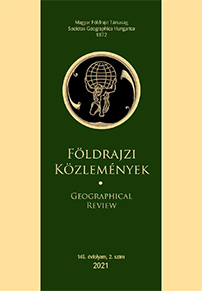A legjelentősebb hazai fürdővárosok településszerkezeti jellemzőinek vizsgálata
Absztrakt
Tanulmányunkban a legismertebb, legtöbb vendéget vonzó és legmagasabb minőséget nyújtó magyar fürdővárosok - Bük, Gyula, Harkány, Hajdúszoboszló, Hévíz, Sárvár és Zalakaros - komplex városszerkezeti jellemzői és sajátosságait vizsgáljuk az egészségturizmus szuprastruktúrájával összhangban. Ezek a települések kiemelkedően értékes turisztikai hagyományokkal rendelkeznek, ahol a jelenlegi struktúra hosszú évtizedek alatt jött létre. A fürdővárosok folyamatos fejlesztéseket hajtanak végre, hogy megőrizzék vezető helyüket az egészségturisztikai piacon. A fejlesztéseket azonban komplex módon kell megtervezni, a természeti erőforrások kiemelt védelmével, előtérbe helyezve a rendszerszemléletű tervezés fontosságát. Így olyan harmonikus és fenntartható fejlődés valósítható meg hosszú távon, amely megőrzi a helyi adottságok, leginkább a különleges gyógyvízbázis ökológiai egységét, egészségét. Ezek mellett a helyi adottságokra épülő tervezés és a helyi közösség érdekeinek előtérbe helyezése is a tudatos, hosszú távú fenntarthatóság irányába vezeti a településeket. Ezek a sajátosságok a fürdővárosok településszerkezetére is hatással vannak, amelyek vizsgálata új lehetőségeket biztosít a települések tudatos fejlesztésében.
Copyright (c) 2021 Ádám Köbli, Zoltán Horváth

This work is licensed under a Creative Commons Attribution-NonCommercial-NoDerivatives 4.0 International License.



